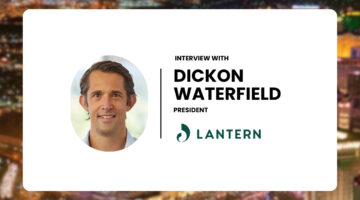
Falls are the No. 1 cause of injury and injury-related emergency department visits for adults over 65. One in 4 older adults falls each year, with the associated medical costs totaling more than $50 billion annually. And that number is projected to increase to up to $100 billion by 2030.
Recent data also shows the average cost per hospitalization for a fall exceeds $50,000. Falls are one of the top five Medicare expenditures, costing about as much as all cancer care combined and accounting for approximately 5% to 6% of the total Medicare spend.

How Lantern Delivers ROI Through Smarter Healthcare Navigation
Dickon Waterfield discusses why Lantern's navigation works.
Despite these numbers, many health plans show low performance over time related to reducing the risk of falling. In fact, a review of CMS data shows that 80% of healthcare plans reported less than 4-star ratings for this measure.
To see the savings and truly prioritize aging members’ total health, plans should work to boost this star rating. Here are three tips for doing so.
Start to close the gap between health and life span
For many of us, there is a need to shift our thinking and approach to aging. This starts with thinking about the gap between health span and life span and how best to close it. Much of the groundwork for that approach can be found in preventive care.

Transforming Clinical Content with Ambient & Generative AI
Sheila Bond, MD, talked about the latest trends regarding integration of AI in healthcare.
Considering the sheer amount Medicare spends on falls annually and that every 11 seconds, on average, an older adult is treated in the ER for a fall, it’s clear our current approach is reactive. But there are proven, proactive ways to prevent falls – and thereby avoid incurring the associated costs. In fact, clinical research shows specific yet simple exercise regimens that include strength and balance training can prevent a significant number of falls for older Americans.
Many adults experience a loss in muscle mass between ages 50 and 70. Educating members 50 and older on the merit of science-based exercise programs and encouraging and incentivizing them to participate in these types of programs is a critical first step in reducing the risk of falling. By focusing on this age group, in addition to the younger demographics more traditionally targeted when promoting fitness benefits, the gap between health and life span will continue to decrease.
Leverage technology
Covid-19 has been incredibly hard on older adults. This population is already at high-risk of social isolation regardless of the state of the world. The pandemic further raised their risk of isolation and correlated effects including loneliness and depression.
Because of this, many were quicker to turn to technology to stay connected and ensure their basic needs, like grocery deliveries and doctor’s appointments, were met. As a result, 44% of older adults view tech more positively as a way to stay connected than they did before Covid-19.
As we continue to navigate the pandemic, online fitness programs allow for older adults – many of whom are still wary to enter crowded spaces such as gyms – to focus on preventive care from the comfort of their own homes. Long after the pandemic, this type of programming will continue to allow for flexible schedules, privacy and personalization.
Look for solutions rooted in research
Until recently, expert trainers who specialized in fitness for older adults were spread across the country and primarily focused on private studios and expensive personal training sessions. This cut off access to wellness solutions for millions of Americans. Fortunately, this is no longer the case.
When analyzing potential opportunities, look for solutions rooted in research – using data to inform and adjust. The proof will be in the numbers.
The ability to customize and allow for accessibility are also key components to look for in a potential solution. In having this at your disposal, you can rest assured that members across the spectrum of needs and in a wide array of locations are all receiving the assistance they need to age well.
Regardless of how you approach a solution, it’s imperative that both health plans and older adults understand the benefits of addressing aging in a way that focuses on preventing certain outcomes and improving others. By doing so, both members and health plans will benefit.
Photo: Toa55, Getty Images
Amanda Rees is the CEO and cofounder of Bold. Bold's digital platform uses personalized, science-backed programs to address the most fundamental health and wellbeing challenges faced by older adults. Bold leverages research and clinical interventions to prevent falls, reduce arthritis related disability, and increase activity levels for older adults. Bold partners with health plans and providers to improve outcomes and reduce care costs.
Prior to co-founding Bold, Amanda managed strategic grantmaking for the renewable energy and transportation portfolio at The 11th Hour Project, a program of the Schmidt Family Foundation. She was also a researcher at Stanford, Princeton and UCLA. Amanda has been a fitness instructor for over a decade, teaching dance, yoga, indoor cycling, and tai chi. She holds a BSE in chemical & biological engineering from Princeton University.
This post appears through the MedCity Influencers program. Anyone can publish their perspective on business and innovation in healthcare on MedCity News through MedCity Influencers. Click here to find out how.






